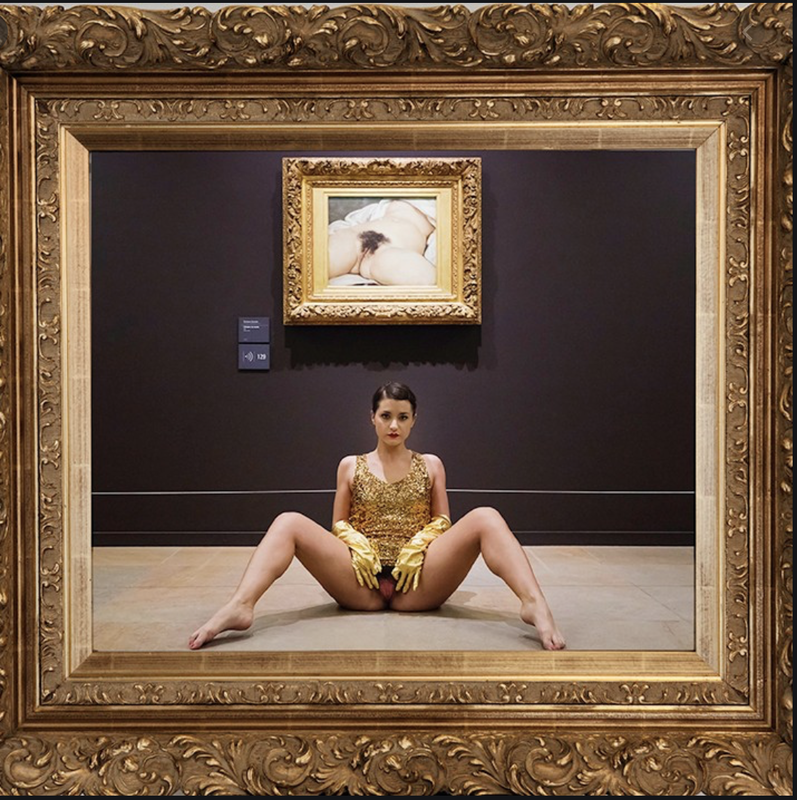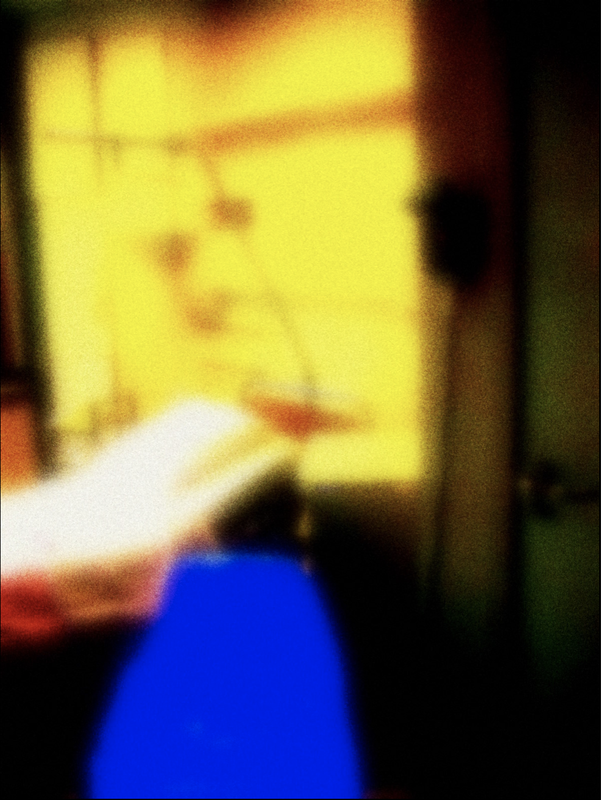|
Apparently Gustave Courbet's well known 1866 painting was meant to be viewed in a private setting of cigar smoking friends (my fantasy), considering the highly erotic subject matter. Only later, in 1995 it found its way into the Musée d' Orsay on view for the public. Theorists use it as an example to discern between 'nude' and 'naked' in art and the painting has also been the object of feminist interpretation, response, critique. There's the Deborah de Robertis 'Mirroir de l'Origine' series and 'L'Origine de la Guerre,' by Orlan. There's the activist-artist group Guerrilla Girls' poster campaign in 1984 aimed at New York’s Metropolitan Museum - 'Do women have to be naked to get into the Met. Museum?' - denouncing the amount of male-produced female nudes that were in the museum, as well as the museum’s role in continuing art’s gender disparity. In The Anatomy Lesson, I also play with the title of Courbet's painting. I use it to title my clay stamps, as they turned out to resemble the world map, and in the monochromatic 'Pre Existing Condition' diptych. I'm looking forward to how the two panels will look together once finished as mirrored companions. By its design I'm addressing the multiformity of the/a? female naked body, deconstructing it as shapes and shadows, making abstraction from the color of flesh, kaleidoscopically, a challenge of 'the (male) gaze'. My focus is on the woman's womb, I emphasise the swirly, flowery - ha! O'Keeffe - look of the grey shapes against the background. It's from that depth that the spiral shoots out, not from the vagina, with that stance challenging Courbet's 'L'Origine du Monde.' After all, all of us as fertilized eggs must attach to the lining of the uterus and not all fertilized eggs successfully implant. And even if they succesfully attach, they can be lost. With my diptych I'll complete the large sized paintings in my body of work 'The Anatomy Lesson' and finish the project this year. It's a feminist art project (as long as male artists are referred to as 'artists' and female artists as 'women artists,' I'll be making feminist art, just saying). The project is based on the 16th century textbook by Andreas Vesalius and focusses on the way women's bodies were and are still seen in art and science. I hope to release the works next year or mount an exhibit with them.
In Belgium, we went back in lockdown on November 2nd. This time I decided to make a visual diary, documenting my mood, the news, happenings in and around the house. 'Every day I write the book,' to quote Elvis Costello--every day I make a page, a painterly print, a drawing, a collage, a pastel painting with whatever I have at hand. So far I have 15 pages, I'm still working on today's. The progress is documented in a daily reel on instagram, feel free to follow my book making there. When the lockdown will be over and my book is finished I will release it, hopefully I can sell it. It's my intention to donate the proceeds to a local organisation that fights poverty helping families that are all the more impacted by this crisis. It's a plan.
Last week I attended an online webinar, organised by fiveleavesbooks and moderated by Jenny Swann. Griselda Pollock talked about 'Old Mistresses: Women, Art and Ideology,' in which she and her co-author Rozsika Parker question whether feminist critique of Art History effected any change in the way artistwomen's works are viewed, written about in the academic sphere and distributed into the world in art publications, exhibits etc. Her answers include words like 'appaling, pathetic' about the economics of publication that exclude artists women from being seen in books, catalogs and museums. Feminist art history doesn't share an equal place in the curriculum, because of the stereotypes associated with feminist art historians/artists/writers/critics. The circuit interlacing financial value, symbolic value and public cultural understanding of why it is important for the diversity of our world to be seen in our art world isn't fully cracked yet. (An impressive numerical study of the undervaluing of artistwomen has been done by Helen Gørrill in her 2020 book 'Women can't paint, Gender, the Glass Ceiling and Values in Contemporary Art.') This eschew situation deforms our imagination generation after generation and disinforms the public. Paraphrasing Griselda Pollock: "think of those little children who go to the museums with schools and do not see themselves there, think of those young women who don't see themselves 'represented,' who don't have the experience oh look this is someone like me hanging in a gallery and the painter as well, I could do that."
The webinar took place at about the time Kamala Harris made her VP acceptance speech in a white suit, honouring the suffrage movement. Her message to young girls: “While I may be the first woman in this office, I won’t be the last. Because every little girl watching tonight sees that this is a country of possibilities. And to the children of our country, regardless of your gender, our country has sent you a clear message: Dream with ambition, lead with conviction, and see yourself in a way that others might not see you, simply because they’ve never seen it before. And we will applaud you every step of the way,”
This is not just an art world issue. All layers of public life matter and play a role in this social movement. A publication by a Belgian author Karen Celis 'Feminist Democratic Representation,' makes the argument for an intersectional update of women's group representation in electoral politics, incentivising elected political representatives to know more and care more about women, move beyond tokenism, to talk with them and not about them.
Vigilance, perseverance and keeping faith ('spreading it' as Biden says), insisting on inclusion, calling out misrepresentation is what will bring about change in how women shape their lives, their opportunities and help us all move towards a truly egalitarian society. All of us deserve to be seen, represented and taken into account. There's still lots of work to be done. This is the diptych titled 'Empty Chair,' a work I made after I was quarantined for radioactive iodine treatment to nuke remnants of my thyroid cancer now 15 years ago. I wanted to portray my bed and the empty chair. Nobody could come into that room with me, not even nurses, let alone touch me. Yesterday caregivers posted a picture of a hospital bed for a Corona patient surrounded with gear and technology on social media to alert people of the gravity of the Belgian situation and their exhaustion. On Sunday, like every first Sunday of the month in some cities around the country, there were shopping events and people went shopping en masse. Shops were offering discounts because of the lockdown going in the day after. The media named it a 'spread event'. I'm making a Lockdown Book this time around, a diary of sorts with Empty Chair on page 1. I'll add a work expressing my mood each day. Today on page 2, I added a painterly print. Let's crush the curve.
|









 RSS Feed
RSS Feed